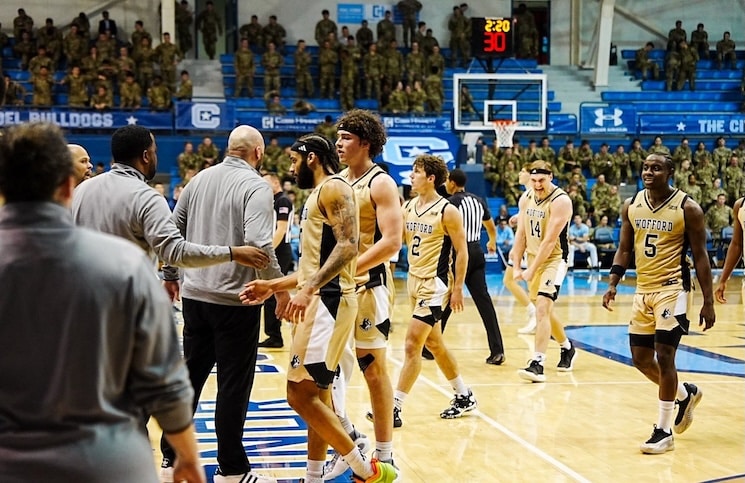There’s been a lot of debate about new Tennessee offensive coordinator hire Mike DeBord. A couple of myths have circulated about DeBord’s history, in my opinion. One is that he’s always run the exact same offense as what Butch Jones does now. Another is that he’s only been a conservative, pro-style play caller that simply lines his teams up in the I-formation.
Unfortunately, there isn’t as much public film of some of his offenses as I’d like, but I’ve found a few examples to show what DeBord’s offenses have looked like in the past (obviously you’ll want to click around on these films to find the offense). As a reminder, we fully believe that – and Jones has said as much – that the UT offense will look largely the same for UT, and would have regardless of who was hired as OC. These clips are designed to compare and contrast what DeBord has done in the past to what UT does now to help determine how good of a schematic fit DeBord is.
–––––––––––––––––––
Here’s the 1998 (’97 season) Rose Bowl (Michigan vs. Washington State). Michigan had a strong rushing attack in its 1997 national title season, so when you watch the Wolverines on film here, you see a heavy emphasis on the I-formation, very few three wide receiver sets and the old-school mentality that some are associating DeBord with. This season, Michigan averaged 171.7 yards per game rushing and 184.4 yards passing.
Fast-forward a couple of years to 1999 at Michigan. Schematically speaking, the offense looks pretty similar, but with Tom Brady at quarterback for much of the season and a pretty big-time receiver in David Terrell, DeBord leaned more on the passing game this year, averaging 234 yards passing and 118.8 yards rushing. Here’s some film from the 1999 opener against Notre Dame:
DeBord went on to be named the head coach at Central Michigan in 2000, where he stayed until 2003. The Chippewas were bad – posting a 12-34 mark during this period. So there isn’t a lot of film available on it, but the Lloyd Carr Show from 2003 shows a few highlights of CMU when it faced Michigan. At first glance, it won’t look exactly like what Butch Jones (who was the OC for CMU in this film) runs at Tennessee now. But there are a lot of similar elements – one-back looks, zone blocking, a lot of quick timing routes in the passing game and even a no-huddle, up-tempo aspect, something Carr talks about in this clip. They are still under center most of the time and they do show some I-formation looks, things the Vols rarely do now. But you can see a lot of the foundations of Jones’ offense. Jones would later go on to work under Brian Kelly and Rich Rodriguez, thus expanding his offense and giving it more of a modern spread look.
Here’s a low-quality highlight film from the 2003 season at CMU. Hard to get a great feel for the offense, but you can learn a little bit more about it:
Now back at Michigan for his second stint as OC, DeBord, who now must answer to Carr again, has an offense that looks pretty similar to what was seen in those late 90s clips. There’s good balance, a lot of I-formation and still a pretty traditional feel. DeBord did install zone blocking before the 2006 season, however, giving the run game a little bit of a different feel. Here are some highlights from the 2006 Michigan-Michigan State game:
This last clip is interesting. In DeBord (and Carr’s) final game at Michigan, the Wolverines looked a lot different. It’s the closest I’ve seen a DeBord offense look like what Jones runs now. Here’s a quote from a New York Times game story:
“The Wolverines won with a version of the spread offense that they installed after the regular season to exploit the inexperience of Florida’s defense and the talent of (receivers) Arrington and Mario Manningham, who caught five passes for 78 yards and a touchdown.”
If you only watch one of these clips, choose this one. The Wolverines are spread out, they’re running out of the shotgun, throwing it all over the field and moving the ball with relative ease against a talented Florida team. Michigan ends up winning the game 38-35.
That was the last time DeBord was in charge of an offense. He since spent time with the Seahawks and Bears. And though he’s been out of the game since 2012, I have no doubt that he’s been studying up on changing offensive trends. Is that as good as actually coaching them? No, in my opinion. But the notion that he won’t understand modern football at all is a clear overstatement. It’s more small adjustments he’ll need to make.
In summary, I still don’t think DeBord is a perfect schematic fit as I’ve said all along – he’s never run a full season of a spread offense that looks like what Jones runs now. But I understand the move from Jones. They speak a lot of the same language, there’s trust and history involved here. I do wish I had found some of the Central Michigan film earlier (and frankly wish I had more), because as I looked at that, I saw more of the schematic fit than I did when I released my original profile on DeBord.
I have questions (here’s a pro/con list I did yesterday) about the hire. Can he develop quarterbacks? Can he recruit? Why were the results so bad at CMU? Will he be fully up to speed with the spread elements in Jones’ offense? I think it’s fine for Tennessee fans to question it. But I also think it’s fair to say that Jones has earned trust with the job he’s done so far.
At the end of the day, it’s a results-oriented business, so DeBord’s history, fan reaction, how he fits and all of that means very little once the 2015 season starts. Expectations are rising and Jones has clearly taken ownership of the program, saying repeatedly that he’s the caretaker and knows what will work best. DeBord is his choice and we’ll find out very soon if he’s right.




